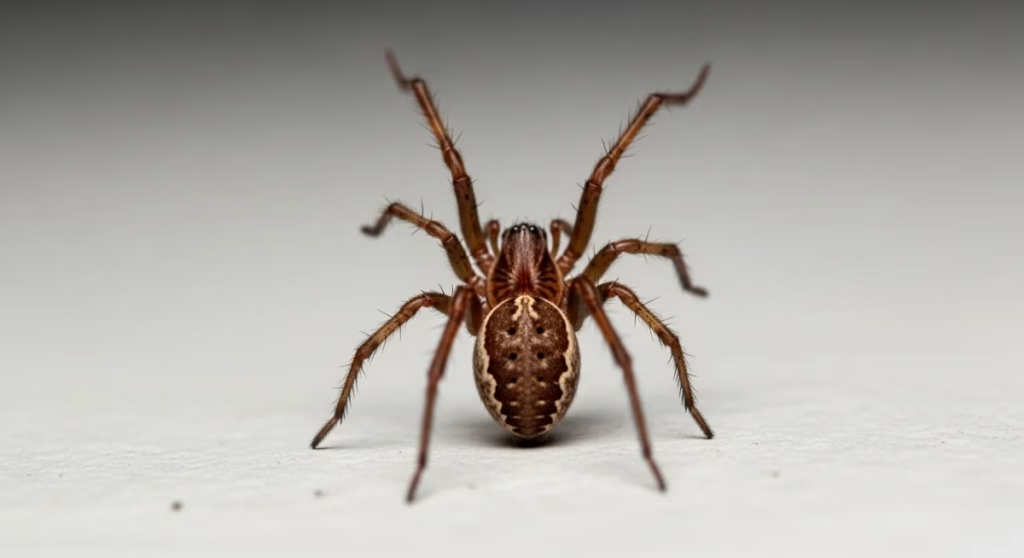Introduction
The brown recluse spider is one of the most misunderstood and feared spiders in the United States. Known for its venomous bite and secretive nature, this spider often hides in dark, quiet spaces like closets, basements, and attics. However, while its reputation is intimidating, the truth about the brown recluse spider is more nuanced — and understanding it can help you stay safe without unnecessary panic.
In this detailed guide, we’ll explore everything you need to know about the brown recluse spider, including identification, behavior, bite symptoms, treatment, and prevention tips.
What Is a Brown Recluse Spider?
The brown recluse spider (Loxosceles reclusa) belongs to the Loxosceles genus, which is native to the central and southern United States. True to its name, it’s reclusive and prefers to live in secluded areas where it won’t be disturbed.
Key Identification Features:
- Color: Light to dark brown, sometimes with a grayish tint.
- Size: Typically between 6–20 mm (about the size of a quarter).
- Distinct Marking: A violin-shaped mark on its back, with the neck of the violin pointing toward its abdomen.
- Eyes: Unlike most spiders that have eight eyes, the brown recluse has six eyes arranged in pairs (dyads).
- Legs: Uniformly colored without bands or spines.
✅ Tip: The violin marking is a useful identifier, but not all brown spiders are brown recluses. Always use multiple features to identify correctly.
Where Do Brown Recluse Spiders Live?
Brown recluse spiders are commonly found in:
- Midwestern and Southern U.S. states such as Missouri, Kansas, Oklahoma, Arkansas, Texas, and Tennessee.
- Indoors, they prefer undisturbed areas like:
- Cardboard boxes
- Shoes, clothing piles
- Closets or attics
- Behind furniture
Outdoors, they can hide under rocks, logs, or woodpiles.
🕸️ Interesting fact: The brown recluse doesn’t spin a web to catch prey. Instead, it hunts small insects at night.
Behavior and Habits of Brown Recluse Spiders
Despite their dangerous reputation, brown recluses are not aggressive. They typically bite only when trapped against the skin — such as when you accidentally put on clothes or shoes where they are hiding.
Key Behavioral Traits:
- Nocturnal hunters: Active mostly at night.
- Solitary nature: They prefer quiet and isolation.
- Fast movers: When disturbed, they quickly retreat to their hiding places.
- Diet: Feeds on small insects, including cockroaches, silverfish, and crickets — which actually makes them helpful pest controllers in moderation.
Symptoms of a Brown Recluse Spider Bite
A brown recluse spider bite can vary in severity depending on the person and the amount of venom injected. Some bites are mild, while others may cause significant skin damage.
Common Bite Symptoms:
- Initial pain or burning at the bite site.
- Redness and swelling within 2–8 hours.
- Development of a blister that turns into an ulcer or open sore.
- Necrosis (skin death) in severe cases — a hallmark of serious envenomation.
- Systemic symptoms like fever, chills, nausea, or fatigue (rare but possible).
⚠️ Note: The bite is often painless at first, which is why many people don’t realize they’ve been bitten until symptoms appear later.
Brown Recluse Bite Treatment
If you suspect a brown recluse spider bite, seek medical attention immediately. Early care can prevent complications.
First Aid Steps:
- Clean the bite gently with soap and water.
- Apply a cold compress to reduce swelling.
- Elevate the affected area to reduce inflammation.
- Avoid scratching or applying heat, which can worsen tissue damage.
- Take over-the-counter pain relief like ibuprofen for discomfort.
Doctors may prescribe:
- Antibiotics (to prevent secondary infection)
- Antihistamines (for itching)
- Wound care or surgery (in severe necrotic cases)
🚑 Emergency Warning: If you experience spreading redness, fever, chills, or muscle pain after a suspected spider bite, go to an emergency room promptly.
How to Prevent Brown Recluse Spiders in Your Home
Prevention is key. Since brown recluse spiders prefer dark, cluttered environments, reducing hiding spots around your home can significantly lower the risk of encountering one.
Prevention Tips:
- Keep clothing, shoes, and bedding off the floor.
- Store items in sealed plastic containers instead of cardboard.
- Declutter storage areas, basements, and attics.
- Regularly vacuum and dust corners and behind furniture.
- Seal cracks, gaps, and vents where spiders may enter.
- Shake out clothes, towels, or shoes before use.
You can also use sticky traps or essential oils like peppermint or tea tree oil to deter spiders naturally.
Are Brown Recluse Bites Fatal?
While deaths from brown recluse bites are extremely rare, serious tissue damage can occur if left untreated. Most bites heal within a few weeks, but large ulcers or necrotic lesions may take months to recover.
Children, older adults, and people with weakened immune systems are more at risk for severe reactions.
🧬 According to medical studies, fewer than 10% of brown recluse bites result in significant necrosis, and less than 1% require hospitalization.
Brown Recluse vs Other Spiders: Key Differences
Many spiders are mistaken for the brown recluse. Here’s how to tell them apart:
| Feature | Brown Recluse | Wolf Spider | Cellar Spider |
|---|---|---|---|
| Eyes | 6 in pairs | 8 | 8 |
| Marking | Violin shape on back | None | None |
| Color | Uniform brown | Patterned | Pale or gray |
| Behavior | Shy, nocturnal | Active hunter | Builds webs |
🔍 Identification Tip: If the spider has stripes, spots, or spines — it’s not a brown recluse.
Myths and Facts About Brown Recluse Spiders
| Myth | Fact |
|---|---|
| Brown recluse spiders attack humans frequently. | They bite only when threatened or trapped. |
| All brown spiders are brown recluses. | False — many harmless brown spiders exist. |
| Every brown recluse bite causes necrosis. | Most bites are minor and heal without issue. |
🕷️ Education and calm awareness are your best tools for prevention and safety.
When to Call a Professional
If you discover a brown recluse infestation, it’s best to contact a licensed pest control expert. They can safely remove spiders, apply targeted treatments, and inspect areas for eggs or hidden webs.
Avoid using harsh chemicals on your own, as improper use can increase health risks or drive spiders into new areas of your home.
Conclusion
The brown recluse spider may have a fearsome reputation, but it’s far from an aggressive creature. Understanding its habits, recognizing the signs of a bite, and maintaining good home hygiene are the best ways to coexist safely.
By taking preventive measures and seeking medical help when needed, you can protect yourself and your family — without unnecessary fear.
Knowledge reduces fear. The brown recluse isn’t your enemy; it’s simply a secretive spider doing its job in nature’s balance.







